Pineapple is a yellow citrus fruit that has a spiky crown on the top and thick, scaly skin on the outside but inside it has so sweet and juicy flesh. You can even grow pineapple as a houseplant.
This will take some time but finally, you will get a taste of the tropics in your living room. Pineapple fruit has seeds that can be used for producing more fruit. This fruit is a great source of vitamins, minerals, magnesium, and potassium. This plant likes to grow in a warm climate and needs a high temperature to grow.
TOP VARIETIES OF PINEAPPLE

Pineapple is also known as Ananas Comosus, this plant has shallow roots and height can be 2-4 feet tall. There are more than 37 types of pineapples found in the world. Each type has its unique flavor and characteristics.
The four main classes of pineapples are Smooth Cayenne, Red Spanish, Queen, and Abacaxi. Different types of pineapple fruit are grown in different parts of the world.
Some varieties are disease-resistant, each variety is different from others based on size, color, shape, sweetness, acidity, and fiber. Here we are going to give you some options, you can select one for growing.
1- ABACAXI PINEAPPLES
This type is a very sweet and disease-resistant variety. This type is very popular among gardeners. The color of the flesh is translucent and the plant of this type grows tall. Although the taste of the fruit is sweet and delicious, this type is too delicate for commercial purposes.
2- QUEEN PINEAPPLE
This type of pineapple is found in Australia and South Africa. The color of the fruit is dark yellow with a small core. If you grow this type then you can enjoy a pleasant aroma and flavor.
3- RED SPANISH PINEAPPLES
The color of this type of pineapple is orange-red and the fruit has an aromatic flavor. This variety is not as tender as other varieties but sturdy and high in fiber.
4- SMOOTH CAYENNE PINEAPPLES
The size of the fruit of this variety is bigger than others. The weight of the fruit can be 4 to 10 pounds. The flesh is very juicy and has a distinctive yellow color.
5- PERNAMBUCO PINEAPPLES
This variety is found mostly in Brazil and has a white, tender, juicy, and mild flavor. The color of the flesh is yellow and the leaves of these pineapple plants are distinctively long and spiny.
6- MORDELONA PINEAPPLES
This type is mostly grown in Colombia and Venezuela. The shape of the fruit is large and cylindrical with a yellow to orange peel. Cream-colored flesh is very sweet and tasty.
7- KONA SUGARLOAF
The sugary flesh is white of this variety. After choosing this variety you will get sweet and delicious pineapple fruit.
8- BRECHECHE
This type of fruit is very small in size and has a cylindrical shape. The color of the flesh is yellow and aromatic.
9- SINGAPORE RED
The leaves of this variety have green leaves with a reddish stripe at the end. The size of the fruit is small and cylindrical. The color of the flesh is golden-yellow. Singapore red is a disease and pest-resistant variety and is great for canning.
10- PANARE
The bottle-shaped fruit has an orange color. The color of the flesh is yellow and slightly fragrant.
HOW TO GROW PINEAPPLE FROM SEEDS?
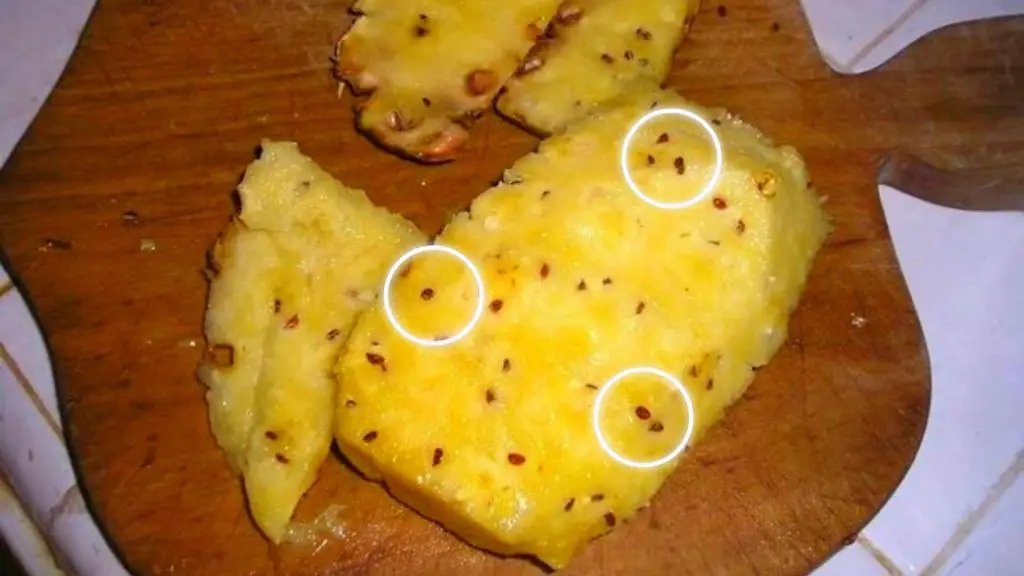
It is not difficult to grow a pineapple at your home but they need your time. There are two ways of growing pineapple fruit: seeds or you can use the top of the fruit for propagation purposes. In this article, we will discuss how to grow pineapple fruit from seeds in detail.
THINGS YOU NEEDED FOR GROWING PINEAPPLE FROM SEEDS
If you decide to grow pineapple then first you need a hearty dose of patience. The other requirements of growing pineapple are ample sunlight, warm weather, and water. The following materials are needed for this purpose.
For growing pineapple from seeds following things, you are needed.
- One ripe pineapple for seeds or you can buy seeds of pineapple from any local nursery or gardening store. On the packet of seeds, you will get all the information about growing pineapples. These tips and instructions will help you a lot so you should follow them.
- A paper towel
- A pot: use a small pot that has drainage holes. Drainage holes are very important to prevent the soil from water accumulation.
- Potting soil: use high-quality potting soil for providing all the basic nutrients to the soil.
STEP 1
You can also buy seeds from the market but you can easily find seeds inside a ripe pineapple fruit. The seeds of pineapple are small black or brown flecks.
These seeds are just like flaxseeds. The size of the seeds is very small, it is about 1mm so look carefully while removing the seeds from the fruit.
The seeds are very close to the skin of pineapple fruits to avoid cutting too deep. If you are using seeds from the pineapple then you should rinse them in water to remove residue.
STEP 2
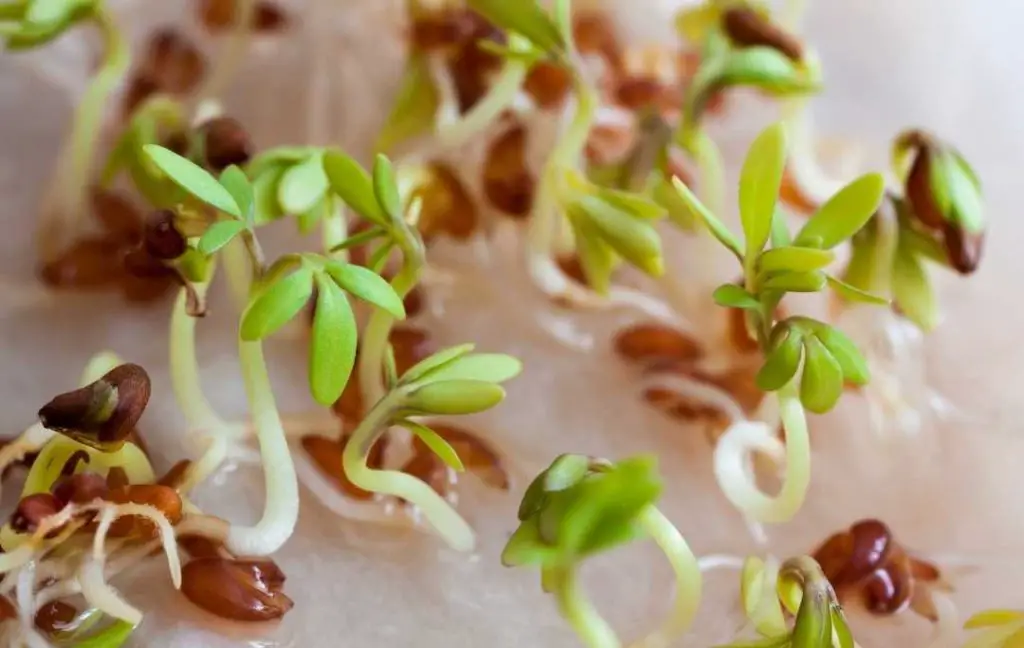
Now you wrap the seeds very gently in a wet paper towel and place them in a plastic zipper bag. You can also use an airtight container for this purpose.
STEP 3
Place the bag in a warm place at 65 to 75 degrees. The germination duration of seeds is about 6 months.
STEP 4
When the seeds start sprouting then you can plant them in a pot. Fill the pot with potting soil and transplant the little seedlings in the pot. The baby pineapple plants need a warm place for growing fast.
While transplanting the seedlings then do this task very carefully without damaging the roots. The roots are very delicate then you should be careful so your new plant adjusts to the new environment.
Your pineapple plants need ample sunlight and water for proper growth. When the plant grows large enough then you can plant them in a permanent location. It can be a larger pot or container or you can plant them in the ground of your garden.
Read More:
- How To Grow Cherry Tomatoes From Slices
- How to Grow Lots of Ginger in Containers
- 20 Best Vegetables To Grow In Buckets
HOW TO CARE FOR A PINEAPPLE PLANT?
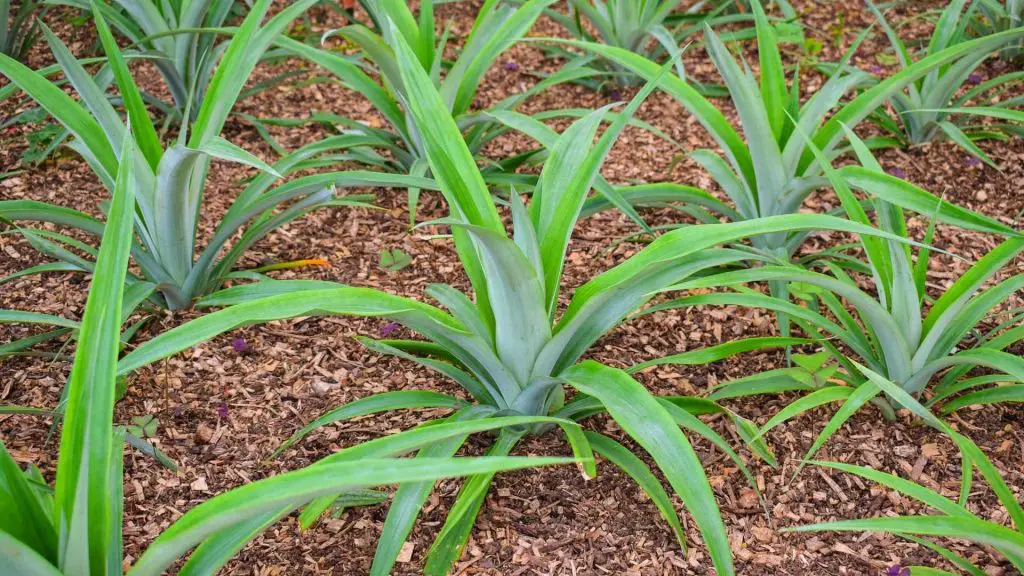
Each plant of pineapple can produce one flower stalk and one pineapple fruit. The immature fruit is poisonous and can cause throat irritation. This plant is very good for purifying the air.
If you are providing all the basic requirements of the plant such as ample sunlight, water, warm temperature, well-drained soil then your plants will flourish happily and you will get high production of pineapple fruit.
Some plants of pineapple take years to produce fruit but long hearty and spiky leaves are a good addition to your garden or living area. Here are some simple factors that are very important for the perfect growth of the pineapple plant.
LIGHT PREFERENCE
Pineapple is a tropical fruit that likes bright sunlight of eight hours per day. Sunlight is very important in the juicy production of fruits. If you see brown tips then trim with the help of sterile pruning clippers.
WATER AND HUMIDITY
Pineapple is a productive plant that can tolerate dry conditions and stay happy with little water especially if you are living in a low water area. Pineapple plants need regular water for the development of flowers and fruit if you are living in a hot climate.
Keep the soil moist but not soggy. It is suggested that water your pineapple plants once a week when the soil surface is dry. You can check the soil with the help of your finger. In hot weather, your plants need more water.
MULCH
Mulch can help to retain water within the soil. It reduces the evaporation process from the soil. Weeds and pests will not affect your plant after mulching. You can also use compost for providing nutrients to the soil and nourish the plant.
IDEAL TEMPERATURE
The ideal temperature for growing pineapple plants is between 18 to 25-degree centigrade or 65 to 95 °F. Choose a warm and sunny location for a growing pineapple plant.
If you are living in a cold climate and you are growing pineapple in the container. Then don’t keep the container outside because pineapple can’t tolerate harsh winter and even frost.
FERTILIZER / PLANT FOOD
For the first few months, your new pi apple plants don’t need any fertilizer. Liquid fertilizer like fish emulsion or seaweed extract works great. Make a dilute solution in a watering can to apply the soil.
Fertilize your pineapple plant once after every two months until the flowers form. 10 10 10 NPK and 4-6% magnesium fertilizer work great for your pineapple plants. Remember artificial or concentrated fertilizer can burn your plants.
CHICKEN MANURE
If you are using chicken manure or feeding your pineapple plant then sprinkle the manure at the base of the plant and into the bottom leaves. The color of the leaves tell you whether feed your plant or not like if you see a reddish/purple tinge
CLEANING
Clean the leaves of the plant with the help of water. You can use a spray bottle for this purpose. The leaves of the pineapple plant can absorb water so make sure the leaves are dirt-free. If you are growing pineapple indoors then it will provide proper humidity.
COMMON ISSUES OF PINEAPPLE PLANT
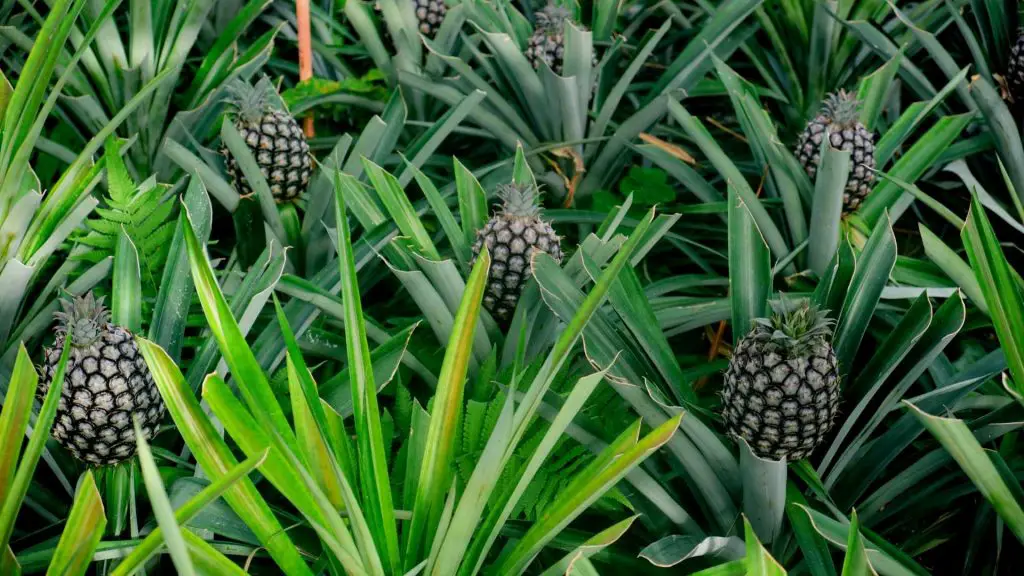
The pests which like pineapple fruit are mealy bugs, mites, and scales. If you wash the leaves with soapy water then you can get rid of these little monsters. Insecticides are also a good option for fighting against these pests. You will get all the basic instructions on the label so read them carefully before using insecticide.
Heart rot is a disease that is caused by fungi. It affects the central leaves and turns them black. Fungicide will help you to some this problem. Apply it at the center of the plant. A well-drained container also helps to avoid such problems.
If you see the color of the leaves turning into light green it means iron is deficient in your plant. Apply organic fertilizer to fulfill this requirement.
HOW TO HARVEST PINEAPPLE?
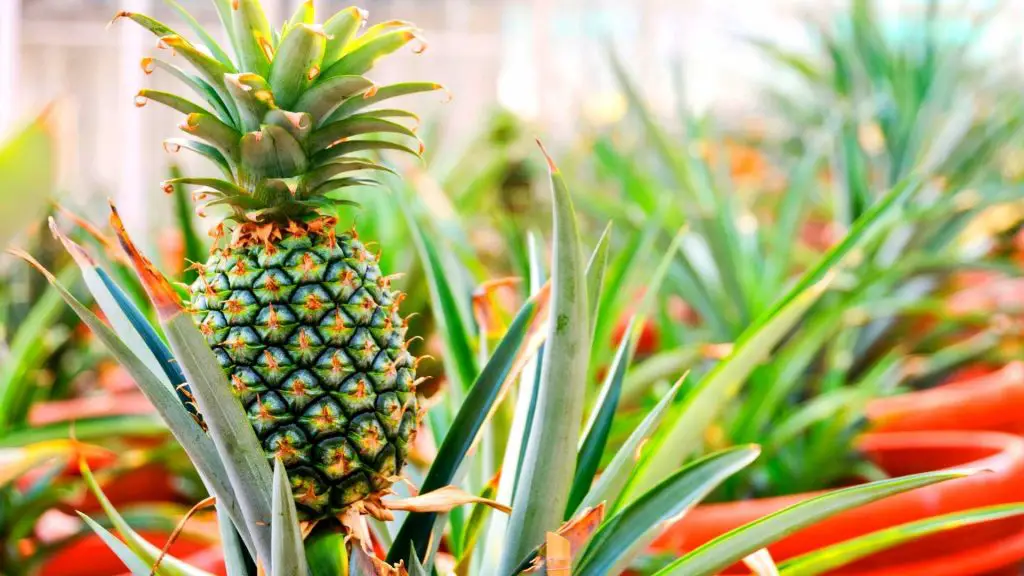
When your pineapple fruit completely turns yellow to orange there it is time to harvest it. For picking the fruit grab it from near the top, make a sideways twist and it will snap off easily from the plant.
The ripe fruit of pineapple can be used as raw or you can also cook it. Before using it first remove the leathery skin, green top, and hardcore. Now you will find fresh, juicy, and sweet yellow flesh for eating. But don’t pick the fruit too early because immature pineapple fruit is poisonous and not good for your health.
Read More:
